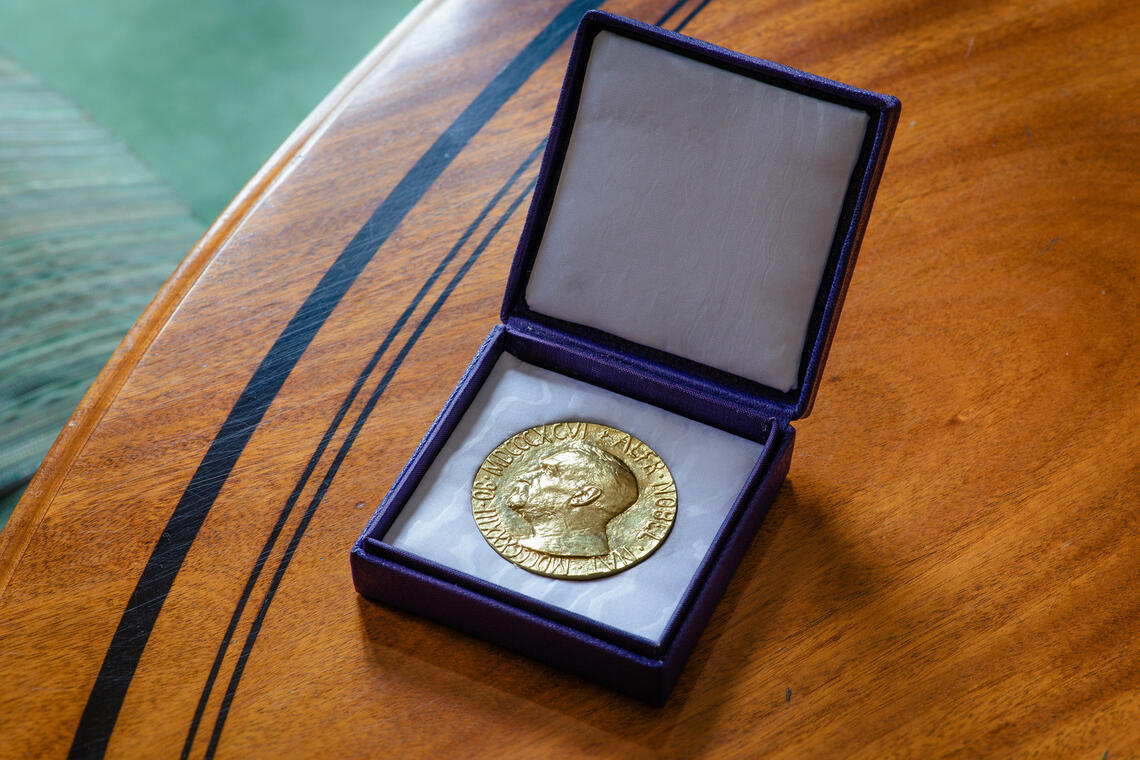The medal

The 18 carat (fairmined) gold medal with Latin inscription "pro pace et fraternitate gentiums", symbolizes the international fraternization that Nobel wished to contribute to through the Peace Prize.
What means most to winners of the Nobel Peace Prize is undoubtedly the recognition that follows from receiving what many consider to be the world's most honourable prize. With the prize, laureates are also presented with a medal, a diploma, and a cheque for a large sum of money (currently 11 million Swedish crowns).
The Peace Prize Medal was designed by one of Norway's greatest artists, the sculptor Gustav Vigeland, assisted by the Swedish engraver Erik Lindberg. It is the only medal Vigeland ever made. It was ready in time for the award in 1902. In its original form, the medal was 23 carat gold and weighed 192 grams; from 1980 on this was changed to 18 carats and 196 grams. Its diameter has always remained the same: 6.6 centimeters.
Pro pace et fraternitate gentium
The front of the medal shows a portrait in relief of Alfred Nobel. His name and the years of his birth and death are engraved along the edge. The reverse shows three naked men embracing - a symbol of the international fraternization that Nobel wished to contribute to through the Peace Prize. The inscription is in Latin: Pro pace et fraternitate gentium (For peace and fraternity among peoples). Around the 5 mm thick edge are engraved the words Prix Nobel de la Paix, the year, and the name of the laureate.